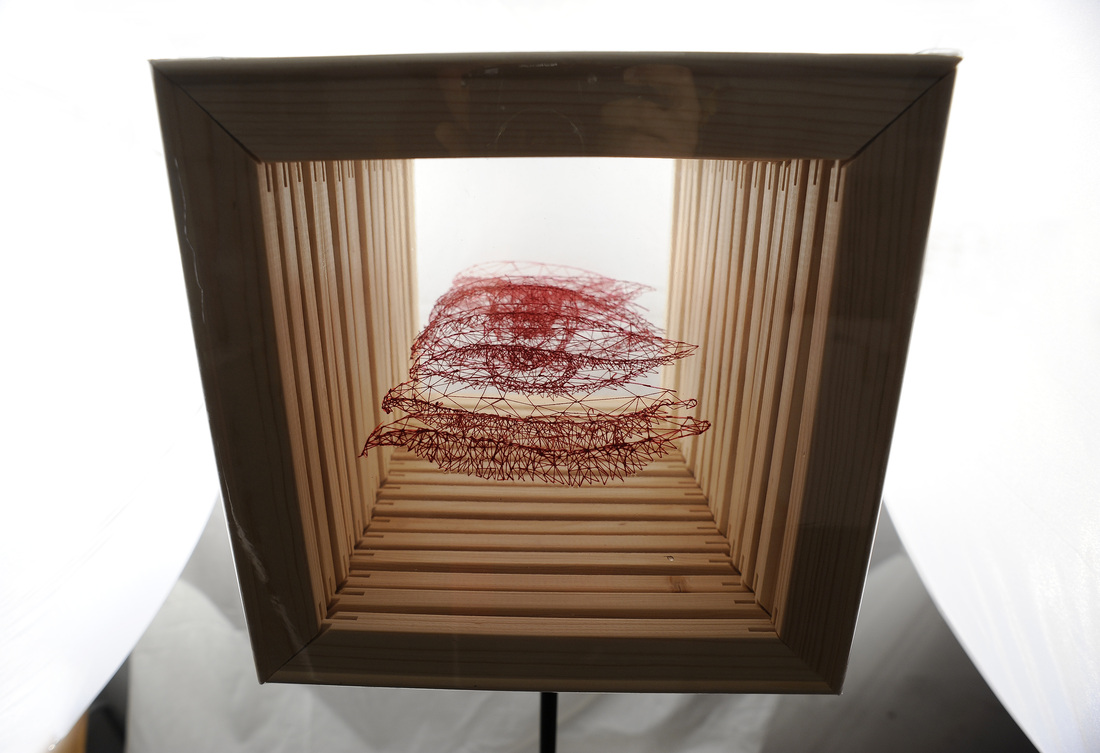 Miro Kang - a young artist from Korea studying in the U.S. who just finished showing her work at the exhibit Multilane, H.O.V. - explains what inspires her works and the process of how she creates art. What inspires your work? My works usually contain personal feelings and emotions, which come from the interpersonal relationships in my life. I draw on the emotion of relationships to create sculpture in an abstract form. The emotions that the sculpture portrays are conveyed through spatial forms. This space is called “the room of emotions,” where I hope that the audience can discuss and relate to the complex emotions presented. At what point did you realize art was your passion and life's work? Is there anyone else in your family with the same talent? I remember that my childhood was always filled with art. I always loved to draw, and especially enjoyed drawing with paper that was larger than sketchbooks, such as the back of calendars, wrapping paper, or boxes - anything. My consistent interest and passion in art as I grew resulted in me attending both middle school and high school that specialized in the arts. It was very natural for me to dream to be a developing artist in that professional art environment. My sister majored in visual arts in Parsons. After she graduated, she went back to Korea and worked in a fashion advertising company. Though her major field is a bit different than the field of fine arts, she is my most important advisor and the person who can share and understand my thoughts and values of works of art. Do you have a system that you follow when you are creating a piece of art? And how do you know when a piece is finished? My drawings have always been the starting point of my sculpture, laying the foundations of the idea process that precedes the artwork. In a way, it is a personal journal I keep, except I never log actual objects or events. It is rather a record of reconstructed scenery of the spontaneous mind that takes form of surreal landscapes or a collection of abstract geometries. Spatial ambiguity runs as a prominent common thread throughout my work—even the most abstract figures, are always situated within unspecified space. Within the log of countless emotions, I realized the inseparable tie between the figure and its space, and the space thus becomes an essential part of the work. A sculpture embodies emotions, and the emotions are passed onto space. The space, paired with the sculpture, becomes “A Room of Emotions.” The room becomes an artwork within which the emotions are shared by and communicated to the audience. Is there something you wish people know about you before they view your works? We encounter numerous emotions within multifarious relationships as we live our lives. Emotions defined by countless vocabularies—happiness, sadness, anger, remorse, loss, despair, pleasure, loneliness. These emotions turn into actions and words, time to time affecting others as well as our selves. We carefully control our emotions and remain reluctant to expose our very naked minds since we understand that display of emotion entails its consequences. I long to remain truthful at all times, however, through continuous sharing and dialogue, refraining from concealment and tolerance. It’s not a loud voice, a piece of eloquent writing, nor a daring action, but my artwork becomes a language of the mind, and therefore the best messenger of emotion. Who is your favorite artist(s)? KiKi Smith, Louise Bourgeois, and Eva Hesse are my favorite female sculptors. I am not a feminist but I love their thoughts and values. I like how they are capable of expressing with their unique styles and interpretations to their own artworks. By Suzette McLoone Lohmeyer
0 Comments
|
Archives
June 2017
Categories
All
|

 RSS Feed
RSS Feed